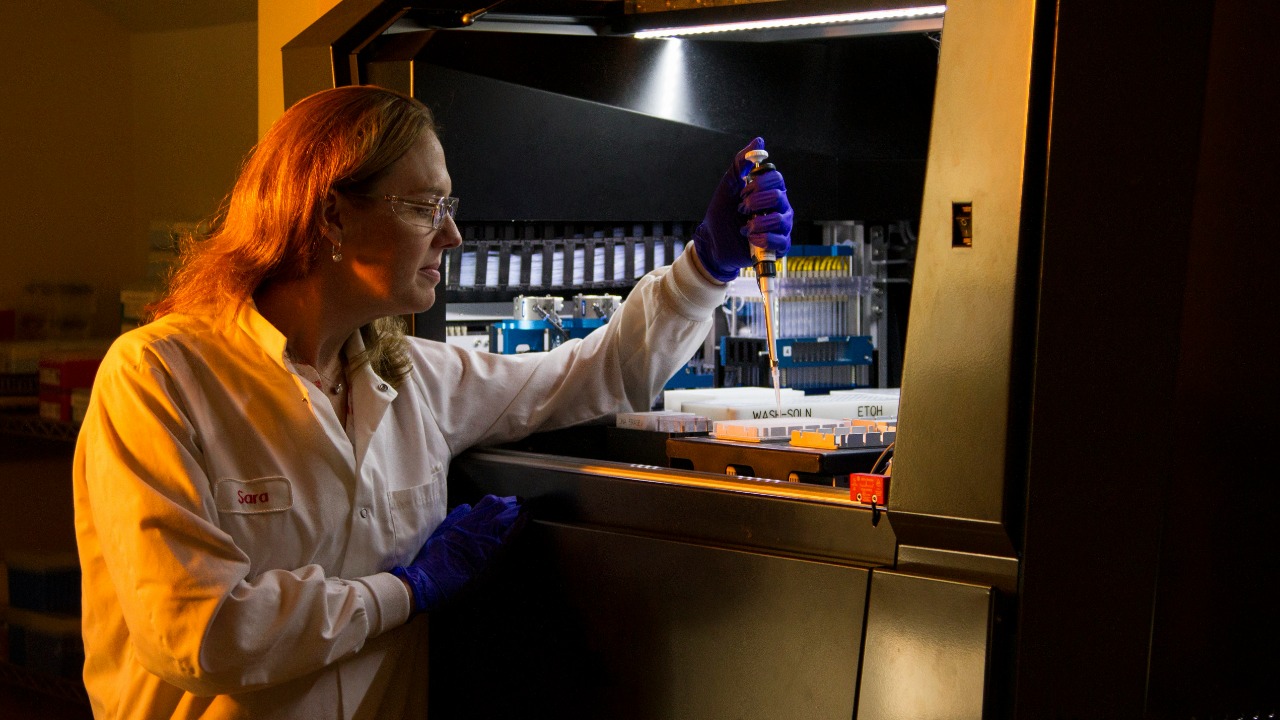
For decades, scientists have been puzzled by large portions of the human genome labeled as “junk” DNA, sequences that seemingly serve no purpose. Yet, recent studies suggest these cryptic sequences might hold significant roles in genetic regulation and evolution, challenging our understanding of genetics.
The Enigma of Junk DNA

Historical Perspective
The term “junk DNA” was coined in the 1960s, reflecting the early belief that large parts of the genome were non-functional and evolutionary leftovers. These regions, which do not code for proteins, were initially dismissed as genetic clutter. However, as research advanced, scientists began uncovering hints of potential functions within these non-coding sequences. The conventional wisdom of junk DNA’s insignificance began to wane as early studies revealed its possible involvement in complex genetic processes.
Over time, the view of junk DNA started to shift. Researchers found that some non-coding regions were conserved across different species, suggesting they might play essential roles. The discovery of regulatory elements like enhancers and silencers within these regions further fueled the idea that junk DNA could have significant biological functions. This paradigm shift opened new avenues for exploring the vast “non-coding” portions of our genome.
Current Scientific Views
Today, the scientific community holds diverse opinions on the purpose of non-coding DNA. Some experts argue that these sequences may contain crucial elements for gene regulation, while others remain skeptical of their functional significance. Recent studies have further complicated the picture by suggesting that so-called junk DNA might influence gene expression, cellular differentiation, and even disease susceptibility.
For instance, research from the National Center for Biotechnology Information has challenged the traditional view of junk DNA as useless. These findings indicate that non-coding DNA might interact with proteins and RNA to regulate gene activity, highlighting the complexity and potential importance of these sequences. Such revelations have prompted scientists to reconsider the role of junk DNA in the broader context of genomic function.
Unraveling the Mystery

Technological Advances
The exploration of junk DNA has been significantly aided by technological advancements. Next-generation sequencing technologies have revolutionized our ability to analyze the non-coding regions of the genome. These technologies allow researchers to explore vast stretches of DNA and identify patterns and elements that were previously undetectable. By providing unprecedented insights into the genome’s dark matter, these tools have been instrumental in uncovering the hidden roles of junk DNA.
Key discoveries, such as the identification of long non-coding RNAs (lncRNAs) and their roles in gene regulation, have been made possible by these technological advances. The ability to sequence entire genomes quickly and cost-effectively has opened new research frontiers, allowing scientists to probe deeper into the enigmatic world of non-coding DNA.
Case Studies
Several notable research efforts have identified functional elements within junk DNA. For example, a study at the Tel Aviv University found that certain non-coding sequences were involved in regulating gene expression in specific tissues. These findings suggest that junk DNA might play a vital role in cellular processes and development.
Another example comes from a study on the role of junk DNA in influencing gene expression and cellular processes. Researchers discovered that some non-coding regions could act as molecular switches, turning genes on and off in response to environmental cues. These insights support the idea that junk DNA is not merely genetic debris but a dynamic component of the genome with essential functions.
Potential Functions of Junk DNA

Regulatory Roles
Evidence is mounting that junk DNA plays a significant role in regulating gene activity. Non-coding sequences are thought to be involved in epigenetic modifications, which alter gene expression without changing the underlying DNA sequence. These modifications can have profound effects on cellular function, development, and disease.
For instance, research has shown that certain non-coding regions are involved in the formation of chromatin structures, which influence gene accessibility and expression. By modulating the epigenetic landscape, junk DNA could help orchestrate complex genetic programs and adapt to changing environmental conditions.
Evolutionary Significance
The evolutionary significance of junk DNA is another area of intense study. Theories suggest that these sequences might contribute to evolutionary adaptation by providing a reservoir of genetic variation. Comparative genomics studies have revealed conserved non-coding regions across species, hinting at their potential evolutionary importance.
These conserved regions might play roles in maintaining fundamental biological processes or allowing species to adapt to new environments. By acting as a genetic toolkit, junk DNA could facilitate evolutionary innovation and diversification, offering a new perspective on the dynamics of genome evolution.
Controversies and Debates

Scientific Skepticism
Despite the growing body of evidence supporting functional roles for junk DNA, skepticism remains. Critics argue that much of the genome is still non-functional, and the significance of non-coding sequences is often overstated. The ongoing debate centers on the proportion of the genome that is truly functional versus non-functional, with some researchers advocating for a more nuanced view of genomic complexity.
Proponents of functional junk DNA face challenges in convincing the broader scientific community. As highlighted in a blog post by Nils Walter, the debate is far from settled, with ongoing discussions about the validity of functional claims and the methodologies used to study non-coding DNA.
Implications for Genetic Research
Redefining junk DNA could have profound implications for genetic research and medicine. By recognizing the potential functions of non-coding sequences, scientists may uncover new therapeutic targets for a range of diseases. Understanding the regulatory roles of junk DNA could lead to novel approaches for treating genetic disorders and developing personalized medicine strategies.
The potential for discovering new therapeutic targets within non-coding regions is immense. As research progresses, the insights gained from studying junk DNA could revolutionize our understanding of the genome and its role in health and disease.
Future Directions in Junk DNA Research

Emerging Research Initiatives
International research initiatives are increasingly focusing on non-coding DNA. Collaborative efforts aim to map and analyze junk DNA across different organisms, providing a comprehensive understanding of its functions and evolutionary significance. These projects hold the promise of revealing new dimensions of genomic complexity and offering fresh insights into the role of non-coding DNA in health and disease.
One such initiative, detailed in this book, involves scientists from around the world collaborating to unlock the secrets of the non-coding genome. By pooling resources and expertise, these projects aim to accelerate the pace of discovery and enhance our understanding of the genetic code.
Impacts on Personalized Medicine
The role of junk DNA in individual genetic variability and disease susceptibility is an exciting area of research. Insights into non-coding DNA could improve our ability to predict disease risk and tailor treatments to individual genetic profiles. As personalized medicine continues to evolve, incorporating knowledge of junk DNA could enhance the precision and effectiveness of medical interventions.
Prospects for integrating non-coding DNA insights into personalized treatment plans are promising. By understanding how these sequences influence gene expression and cellular processes, healthcare providers can develop more targeted therapies and improve patient outcomes.